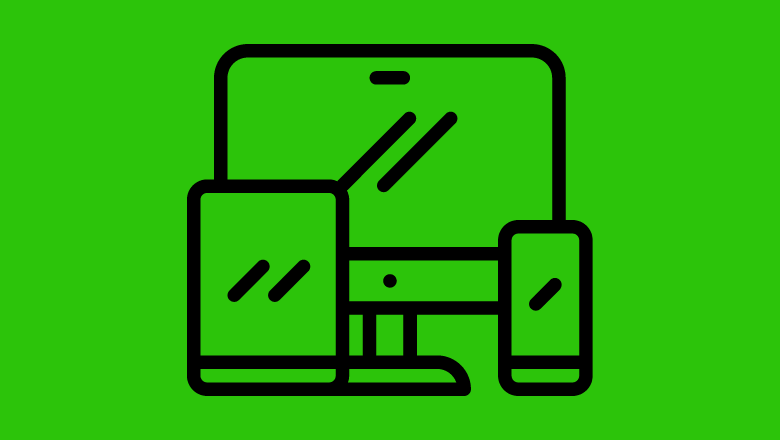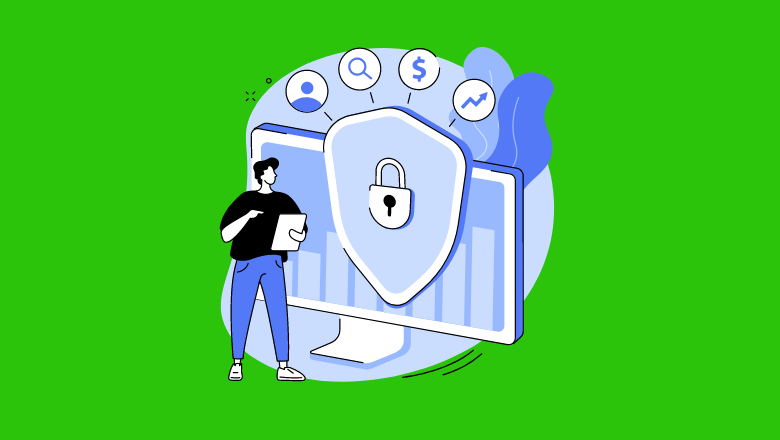Menu

Remote Working: How to Stay Safe – If you’re one of the many recently transitioned to remote working, you’re not alone.
While remote work offers numerous benefits, such as flexibility and convenience, it also comes with certain risks you must be aware of. Whether protecting your sensitive data or ensuring your safety, it’s essential to protect yourself in this new working environment.
That’s where Remote Working: How to Stay Safe guide comes in. With our expert tips and best practices, you can confidently work remotely, knowing you’re taking the necessary precautions to keep yourself safe and secure.
The world is experiencing a significant shift in the way people work. Many companies have been forced to adopt remote working due to the pandemic.
However, this shift has brought new challenges, particularly regarding security. Remote working has created an ideal environment for cybercriminals to exploit, with employees using personal devices, unsecured networks, and a lack of security protocols.
This blog will touch on the pain points that remote workers face, answer the target audience’s questions, and provide a comprehensive guide on how to stay safe while working remotely.
Table of Contents
ToggleAll these factors have created an ideal environment for cybercriminals to exploit and gain unauthorized access to sensitive data.
Following best practices is crucial for staying safe while working remotely. The first step is to use a company-provided device with updated security software. It ensures that the device is secure and protected from cyberattacks.
Secondly, employees should use a virtual private network (VPN) to connect to the company’s network. A VPN creates a secure connection and encrypts all data transmitted between the employee’s device and the company’s network.
Thirdly, employees should be vigilant when it comes to phishing attacks. Cybercriminals often use phishing attacks to access sensitive information. Use caution whenever you click on links from unknown sources or open attachments.

Personal devices are often less secure than company-provided devices. Therefore, it is vital to take extra precautions when using them for work:
Home networks are often less secure than office networks, making them vulnerable to cyber-attacks. To secure your home network, you should start by changing the default password on your router. Using a strong and unique password for your router adds an extra layer of security. Secondly, work-related devices should be connected to a separate network.
As a result, work-related traffic is isolated from other network traffic, reducing the risk of cyber attacks. Lastly, employees should ensure that their Wi-Fi network is encrypted using WPA2 or WPA3, as this prevents unauthorized access to the network.
Communication is a vital part of remote working but can also be a security risk. Employees should use secure communication platforms, such as Zoom or Microsoft Teams, to ensure safe communication.
These platforms use end-to-end encryption, which ensures that messages and calls are secure and cannot be intercepted by cybercriminals. Employees should also avoid discussing sensitive information on public channels or in emails, as these can be intercepted.
It is crucial for remote workers to stay safe. Companies should provide clear guidelines and policies for employees to follow remotely.
This includes procedures for using personal devices, connecting to networks, and handling sensitive information. It is also essential to provide training to employees on how to identify and respond to security threats. This helps employees to be more aware and vigilant when it comes to security.
Companies should also implement access controls to restrict access to sensitive data. The risk of a data breach is reduced since sensitive data is only accessible to authorized personnel.
It is also essential to have regular data backups to ensure that data can be recovered in case of a cyber-attack or data loss.
Companies should have the plan to respond to a security breach.
This includes having a designated response team, establishing procedures for containing the breach, and notifying relevant parties, such as employees and customers.
Having a plan ensures that the company can respond quickly and effectively in case of a security breach.
Remote working has become a new norm with security challenges.
To stay safe while working remotely, employees should follow best practices, such as using a company-provided device or a VPN and being vigilant against phishing attacks.
Personal devices and home networks should be secured, and employees should use secure communication platforms. Companies should also establish clear security protocols and access controls and have the plan to respond to a security breach.
By following these guidelines, remote workers can work safely and securely from anywhere.

To secure your home network, you should change the default password on your router, use a separate network for work-related devices, and ensure that your Wi-Fi network is encrypted using WPA2 or WPA3.
VPNs create a secure connection between an employee’s device and the company’s network. It encrypts all data transmitted between the two, which reduces the risk of a cyber attack.
Phishing attacks often involve emails that appear to be from a legitimate source, such as a bank or a company. They usually contain a link or an attachment that, when clicked, can install malware on your device. To identify a phishing attack, look for suspicious emails, check the sender’s email address, and hover over links before clicking.
Establishing security protocols helps employees to be more aware and vigilant when it comes to security. It also ensures that sensitive data is protected and the company is prepared to respond to security breaches.
Remote working has become a new norm for many organizations, but it also comes with security risks. Some of the most common security risks associated with remote working include the following:
Unsecured Devices: Remote workers often use their devices to access company data, which may need adequate security measures. This puts the company’s sensitive data at risk of being accessed by unauthorized parties.
Phishing Attacks: Remote workers may be more vulnerable to phishing attacks designed to trick users into revealing sensitive information. With the rise of remote working, attackers have increased their use of phishing attacks to target remote workers.
Unsecured Networks: Remote workers may use unsecured networks to access company data, which puts the data at risk of being intercepted by hackers.
Insider Threats: Remote workers may accidentally or intentionally leak sensitive data, which can cause significant damage to the organization.
Lack of Oversight: Remote workers may need to be supervised, making it difficult for managers to monitor their activities and ensure they follow security protocols.

Data Breaches: Unsecured devices and networks can lead to data breaches, resulting in sensitive data being stolen or leaked. This can cause significant financial and reputational damage to the organization.
Compliance Issues: Organizations may be subject to legal or regulatory compliance requirements, and failing to meet these requirements can result in legal and financial penalties.
Loss of Productivity: Security incidents can disrupt business operations and cause employees to lose productivity while dealing with the aftermath of a security incident.
Damage to Reputation: Security incidents can damage the organization’s reputation, making it difficult to attract new customers or retain existing ones.
To mitigate these risks, organizations should establish clear security policies and guidelines for remote workers, provide training on best practices, and implement access controls to restrict access to sensitive data.
They should also use secure communication platforms, ensure that employees use company-provided devices, and use VPNs to encrypt data transmitted between remote workers and the company’s network.
By following these guidelines, organizations can reduce the risk of security incidents and protect their sensitive data.

Organizations have implemented various security practices to mitigate the risks associated with remote working. Some of the existing security practices include:
Organizations use Virtual Private Networks (VPNs) to create secure connections between remote workers and the company’s network. VPNs encrypt data transmitted between the remote worker’s device and the company’s network, making it more difficult for hackers to intercept the data.
Two-factor authentication (2FA) is an additional layer of security that requires remote workers to provide a second form of identification, such as a password or fingerprint, in addition to their username and password. This helps to prevent unauthorized access to company data.
Data is encrypted into a secret code to prevent unauthorized access. Organizations can use encryption to protect sensitive data, such as financial or personal data.
Access controls restrict access to sensitive data to only authorized personnel. Organizations can implement access controls using a role-based key or requiring employees to authenticate themselves before accessing specific data.
Organizations can provide security training to remote workers to educate them on security best practices and raise awareness of the risks associated with remote working. This can help to reduce the likelihood of security incidents caused by human error.
Endpoint security software is designed to protect the remote worker’s device from malware and other security threats. Organizations can install endpoint security software on remote workers’ devices to protect them from security threats.
Regular software updates and patches can address security vulnerabilities in software and operating systems, reducing the risk of security incidents.
By implementing these security practices, organizations can reduce the risks associated with remote working and protect their sensitive data.
However, it’s important to note that no security practice is foolproof, and organizations should regularly review and update their security practices to stay ahead of emerging threats.
In the context of remote working, organizations can enhance their security measures by implementing the following strategies:
Organizations should establish a comprehensive security policy that outlines best practices for remote workers, including password management, use of public Wi-Fi, and data protection. The policy should also provide guidelines for reporting security incidents and outline the consequences of security breaches.
Organizations should ensure that all software and operating systems used by remote workers are up-to-date with the latest security patches and updates. Implementing this measure will help to protect remote workers’ devices from known vulnerabilities.
Organizations should provide secure access to their network and data by requiring remote workers to use VPNs and two-factor authentication. Remote workers should also be required to use safe password management practices, such as using strong passwords and changing them regularly.
Organizations should conduct regular security training for remote workers to educate them on security best practices and raise awareness of the risks associated with remote working. This training should regularly reflect emerging threats and new security practices.
Cloud-based security solutions, such as firewalls and endpoint security software, can provide adequate security protection for remote workers. These solutions can be updated and managed centrally, reducing the burden on remote workers to maintain their security software.
Organizations should conduct regular security assessments to identify vulnerabilities in their remote working environment. These assessments can help identify potential security risks and guide how to mitigate them.
By implementing these strategies, organizations can enhance their security measures and better protect their sensitive data in remote working. However, it’s important to note that no security measure is foolproof, and organizations should continuously monitor and update their security measures to stay ahead of emerging threats.

In addition to the strategies mentioned earlier, organizations can implement the following tips and techniques to enhance the security of their remote working environments:
Limit access to sensitive data: Organizations should limit access to sensitive data to only those employees who need it to perform their job functions. You can achieve this by implementing role-based access control and strict data classification policies.
Encrypt sensitive data: Organizations should encrypt sensitive data in transit and at rest. You can achieve this by implementing encryption technologies such as SSL/TLS and AES.
Monitor network activity: Organizations should monitor network activity to detect suspicious behavior and potential security breaches. Enhance security measures with Security Information and Event Management (SIEM) and Intrusion Detection Systems (IDPS).
Device management policies: Organizations should implement device management policies to ensure that remote workers’ devices are secure and meet minimum security requirements. This can involve implementing procedures around device encryption, software patching, and antivirus software.
Use secure communication tools: Organizations should use secure communication tools, such as encrypted messaging and video conferencing platforms, to ensure that third parties do not intercept sensitive information.
Conduct regular backups: In case of a security breach or data loss, organizations should regularly back up their data.
By implementing these additional tips and strategies, organizations can further enhance the security of their remote working environments and reduce the risk of security breaches and data loss. Organizations must stay vigilant and adapt to emerging threats by continuously updating their security measures and policies.
Although organizations have put security practices in place to mitigate risks associated with remote working, there are still potential gaps that they can address to enhance security measures further. Some of these potential gaps include:
Human error: One of the most significant potential gaps in security practices is human error. Employees may unintentionally put sensitive data at risk by clicking on malicious links or falling for phishing scams. Regular security awareness training programs can address this, which educates employees on recognizing and responding to potential security threats.
Lack of device management: While organizations may implement device management policies, they may only partially control employees’ devices used for work. Providing employees with secure company-owned devices that meet minimum security requirements can address this issue.
Insufficient monitoring: While monitoring network activity is essential, organizations may be unable to detect all potential security breaches or suspicious behavior. Advanced real-time monitoring tools and technologies that detect and respond to security threats can address this issue threats.
Outdated security measures: Some may need to be updated as cyber threats evolve. Organizations should regularly review and update their security measures to ensure they are effective against emerging threats.
Inadequate response plans: Developing and regularly testing incident response plans is crucial in ensuring they are practical and efficient. Periodically developing and testing incident response plans are necessary to ensure they are helpful and efficient.
Organizations should regularly assess their security measures and policies to address these potential gaps and adapt them to emerging threats.
Organizations must stay up-to-date with the latest security trends and best practices to protect their remote working environments adequately.
Get your free, personalized remote development team consultation. Schedule your call now.
About the author: Jacob Tenwick
Avid business developer and development manager
Input your search keywords and press Enter.